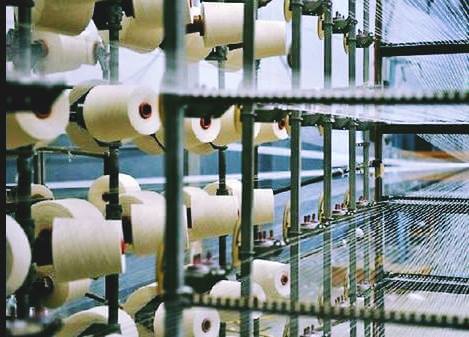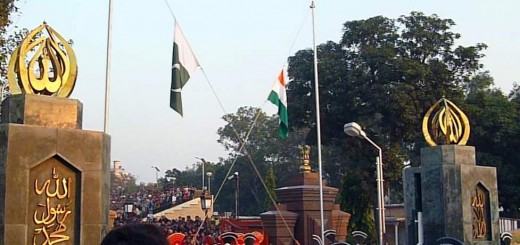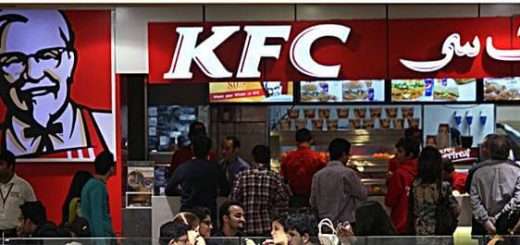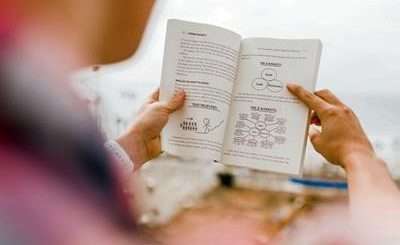HR Cotton Industries Pakistan: Management Report
HR Cotton Industries Pakistan: Management Report
INTRODUCTION
HR Cotton Industries is an emerging business organization in textile industry, which is expanding its operations rapidly. It is a textile factory, which manufactures and exports different kinds of textile products, ranging from bed sheets to bathrobes.
It was established in late seventies with just two machines. With the continuous efforts of its owners, it has increased its capacity to more than 100 machines. Its is a family business which is managed in traditional style
Products:
The company produces two major types of products:
Towel
A variety of towels are manufactured such as:
- Face towels
- Hand towels
- Bathrobes
- Other related products like gloves, etc.
Plain cloth
Plain cloth comprises a significant portion of output such as:
- Bed sheets
- Curtains
- Napkins
Scale of Operations:
Basically, it is a medium size factory, which has its manufacturing units at different locations in Karachi. Each unit represents a different process of production and is interlinked with other units. All these units are controlled by a central office, which coordinates their activities and makes sure that every thing is done in an effective and efficient manner. The company employs over 100 workers in all while the management of subunits is in the hands of family members.
Business Environment:
The company belongs to textile industry, which is the backbone of our economy. Due to several factors, there is a slump in this industry, which is badly affecting our economy as well. A large number of textile units have been closed while others are struggling .HR Cotton Industries is also facing the same difficulties. However, it has been able to extend the scale of its operations. As far as the competition is concerned, rate and quality are the key factors.
Customers:
Customers of HR Cotton Industries can be put in two categories:
Local market customers:
These customers are the parties who order or purchase to supply in the local market. These are highly cost conscious customers and the reason for this is the low purchasing power of people. Orders belonging to these customers represent a small percentage of
total sales, usually 10 to 15 percent. The products, which do not meet the standards of exporters, are sold to these customers.
Exporters:
These are the main customers of the company and represent 80 to 85 percent of total sales. The major demand of these customers is quality of products as they face high pressure from their foreign clients in this regard. The foreign market is highly competitive not only in terms of quality but also cost. A significant portion of HR Cotton Industies’ products is sent to following countries:
- United States of America
- United Kingdom
- Germany
- Australia
- Canada, etc.
Type of Orders:
The orders may be of the following types:
1) Finished product:
This is a value added product, which is stitched and packed in the style determined by the order. This product goes through the following processes:
- Sizing/Warping
- Weaving
- Bleaching/Dying
- Stitching/Packing
2) Unfinished Product:
This type of product is moved out of the process-chain at any stage depending upon the specification of the order. There may be following types of unfinished products:
- Grey cloth
This is the output of weaving process.
- Bleached cloth
This is the output of bleaching/dying process.
Manufacturing Processes
A finished product goes through the following processes:
Sizing/Warping:
Sizing and Warping are two different processes for plain cloth and towel. When the product is plain cloth, it goes to the sizing process. The manufacturing process starts from sizing. Yarn is supplied to this department and is converted into beams of thread, which are sent to the weaving department. For towels, the manufacturing process starts from warping where similar beams are prepared in a slightly different manner. This warping process is usually done in the weaving department and its cost is included in weaving process’s’ cost.
Weaving:
Beams of thread are transferred in this department from Sizing/Warping. Here, the cloth or towel is woven depending upon the nature of order. The output of this department is called Grey Cloth. This can be the required product for certain customers.
Bleaching:
If the order is of finished cloth or towel, it comes to this process. The bleaching process is outsourced to a bleaching/dying unit.
Stitching:
This is the last of all processes where the input comes from bleaching unit. This is also outsourced. Packaging is also a part of this process.
Major Input
The major input to the mancufacturing process is yarn, which can be of many types or quality depending upon its count. Following are the few of its many types:
Count Rate/Pound
10 single yarn 42.00
20 single yarn 48.00
16 single yarn 45.00
26 single yarn 56.00
30 single yarn 58.00
40 single yarn 70.00
Note:
- Costs can vary according to the market conditions.
- The measuring unit of yarn is pound and it is usually available in 100 pounds bag.
COSTING SYSTEM:
The major thing in this regard is to decide whether to allocate actual costs to the unit of production or to assign costs on a standard cost basis. HR Cotton Industries uses a blend of standard and actual costing system. When the company has to quote an order, it uses standard costing procedure and for reporting purpose, it uses actual costing system.
Cost Accumulation Procedure:
The company uses perpetual cost accumulation system. The reason is that this system provides relevant information to management on a timely basis to add in planning and control decisions. In this system, the cost of direct material, direct labor and factory overhead first flow through work-in-process-inventory in order to reach finished goods inventory. The total cost transferred from work-in-process-inventory to finished-goods-inventory during the period equals the cost of goods manufactured.
Process Cost Accumulation System:
As products are manufactured by continuous processing, the company uses some sort of process cost accumulation system. Under this method, the three basic elements of a product’s cost (direct material, direct labor, factory overhead) are accumulated according to a processing unit (sizing or weaving). This process unit is a major functional division in HR Cotton Industries where related manufacturing process is performed, The unit cost is computed for every department by dividing the total cost accumulated for the system by the total number of units produced by the department.
Calculation of Towel’s Cost:
In this report, we are going to understand how HR Cotton Industries calculates/accumulates the cost of towel.
Cost of an Order:
The company receives order from the customers who give their specification. Before we calculate the cost, we should know some important things about towel. Towel consists of three components:
· Ground
Ground is the basement of towel.
· Pile
Pile is the thing that makes towel different from plain cloth.
· Weft
Weft is horizontal line of thread in the towel.
For costing, company uses different types of yarn for each of these components, which affects the total material cost. Company allocates percentages to these components for the total material they consume. Below is the table, which calculates the total cost of yarn/direct material used in an order.
| Count of Yarn | Component | Percentage of Component | Rate of Yarn per Pound | Cost per Component |
| 20/2 | Ground | 22% | Rs.51 | Rs.11.22 |
| 20/s | Weft | 18% | Rs.48.5 | Rs..73 |
| 16/s | Pile | 60% | Rs.42.5 | Rs.22.5 |
Note: These rates are of April 2001
The total cost of the yarn comes out to be Rs.45.45/pound by adding cost of each component.
As some percentage of yarn is wasted during the process, company allocates this wastage to the cost of direct material.
Cost of yarn/pound Rs.45.45
Wastage (3% of Rs45.45) Rs.1.36
Total cost of direct material Rs.46.81
In this case, we have taken 3% wastage of yarn.
Cost of Weaving:
The second part of this costing procedure is cost calculation of Weaving Process.
Direct Labor Rs.2.5/pound
Indirect Labor Rs.2/pound
Utility Charges Rs.1/pound
Other Expenses Rs.0.50/pound
Total Weaving Cost Rs.6.00/pound
Total Cost to be quoted to the Buyer:
Total cost of direct material Rs.46.81
Total cost of weaving Rs.6.00
*Cost of bleaching/dying Rs.3.00
*Cost of Stitching Rs.4.00
Unadjusted Cost of the Order per pound Rs.59.81
Cost of Defective Units (5% of total cost) Rs.3.00
Adjusted Cost of the Order per pound Rs.62.81
*These processes are outsourced. So whatever price is charged by bleaching and stitching
units, it is included in the total cost, which is per pound.
The company sets a standard percentage of total units as defective ones. This is an arbitrary decision of allocating defective unit’s cost to the total cost.
This is a standard costing procedure used by the company for quoting the order prices per pound. These are the standards, which are different from the actual cost incurred during the various stages of manufacturing process.
Actual Cost Accumulation:
The company calculates cost of goods manufactured in the weaving department and includes bleaching and stitching charges to the cost to get its total. The reason for this is that bleaching and stitching processes are outsourced and only the direct material’s cost and the cost incurred in warping and weaving is included in the internal cost.
Below is the actual cost for the month of February. The cost belongs to the weaving department. There are 30 machines (power looms). The standard capacity of one machine is 80 pounds per day. In the month of Feb, each machine produced 70 pounds on average per day, which means that in the month of February, 58,800 pounds of towel was produced. Direct labor charges for one pound are Rs.3.00. Below is the schedule of the cost incurred:
| Count of Yarn | Component | Percentage of Component | Rate of Yarn per Pound | Cost per Component |
| 20/2 | Ground | 20% | Rs.50 | Rs.10 |
| 20/s | Weft | 30% | Rs.47 | Rs.14.1 |
| 16/s | Pile | 50% | Rs.40 | Rs.20 |
The total cost of the yarn comes out to be Rs.44.1pound by adding cost of each component.
As some percentage of yarn is wasted during the process, company allocates this wastage to the cost of direct material.
Cost of yarn/pound Rs.44.1
Wastage (3% of Rs44.1) Rs.1.32
Total cost of direct material Rs.45.42
In this case, we have taken 3% wastage of yarn.
Direct Material:
Cost per pound x Total pounds produced=Direct Materials Cost
Rs.45.42/pound x 58,800 pounds Rs.2,670,696
Direct Labor :
Labor rate x Total pounds produced = Direct Labor
Weaver’s Rate
Rs.3.00/pound x 58,800 pounds = Rs.176,400
Sarning Rate
Rs 0.25/pound x 58,800 pounds = Rs.14,700
Pervending Rate
Rs. 0.40/pound x 58,800 pounds = Rs.23,520
Total Direct Labor Rs.217, 620
Factory Overhead:
Supervisor’s Salary Rs.20,000
Loader’s Salary Rs.6,000
Electricity Rs.45,000
Generator’s Expense Rs.15,000
Indirect Material Rs.20,000
Other OH expenses Rs.7,500
Total FOH Rs.113, 500
Total cost of goods manufactured Rs.3, 001,816
Cost per pound for all products (including defective ones)= Rs.51.041
Treatment of Defective Products:
B and C quality towels, which are rejected during quality control process, are sold in the local market at a price of about 15 to 20% of actual cost.
During February, amount on rejected towels was 2,400 pounds.
Cost of defective products (2,400 x 51.041) Rs.122,498.4
Sales of defective products (2,400 x 12) Rs.28,800
Actual per unit cost of A quality towel
Total cost of goods manufactured Rs.3, 001,816
Less: Sales of defective product Rs,28,800
Total cost of A quality product Rs.2,973,016
Per Unit Cost =Cost/A quality units
Per Unit Cost =2,973,016 / 56,400 Rs.52.713
This cost is only for the processes, which are incurred in the factory-owned units and does not include the cost incurred in bleaching and stitching processes. Bleaching and stitching charges can be included to arrive at the final cost per unit.
FINDINGS
During our study of the company’s processes, we found the following noticeable aspects:
- Minute details of costing such as treatment of waste material, are ignored.
- Treatment of by-products is not given much attention.
- The concepts we have studied in cost and managerial accounting are not applied in absolute terms in the factory.
- The manufacturing process of company is labor intensive but requires high investment in raw material.
- The work-in-process inventory is ignored in calculating total cost.
- There is no proper budgeting process in the company.
- Usually, the actual cost is higher than the standard cost but there is no procedure for accounting of this variance.
- There is no service department so there is no allocation of service department costs.
- The defective units after bleaching and stitching are not properly accounted in the calculation of total cost.
- The manufacturing units do not operate at their full capacity. Because of this, the company loses potential revenue.
- No proper analysis techniques such as “analysis of variance” is used.
SUGGESTIONS
- Proper attention should be given towards the accounting of waste materials and by-products.
- Budgeting procedure should by carried out with great care and professionalism.
- A qualified accountant should be hired immediately to look after the accounting matters according to international standards.
- The standards for costs should be realistic. These standards should be set after carefully analyzing the capabilities of the company.
- Capacity decisions should be made after analyzing the macroeconomic conditions of the country.
- Statistical techniques should be used to minimize the variance.
References:
Mr. Muhammad Kalim
Manager Operations
Phone No: 4539150














